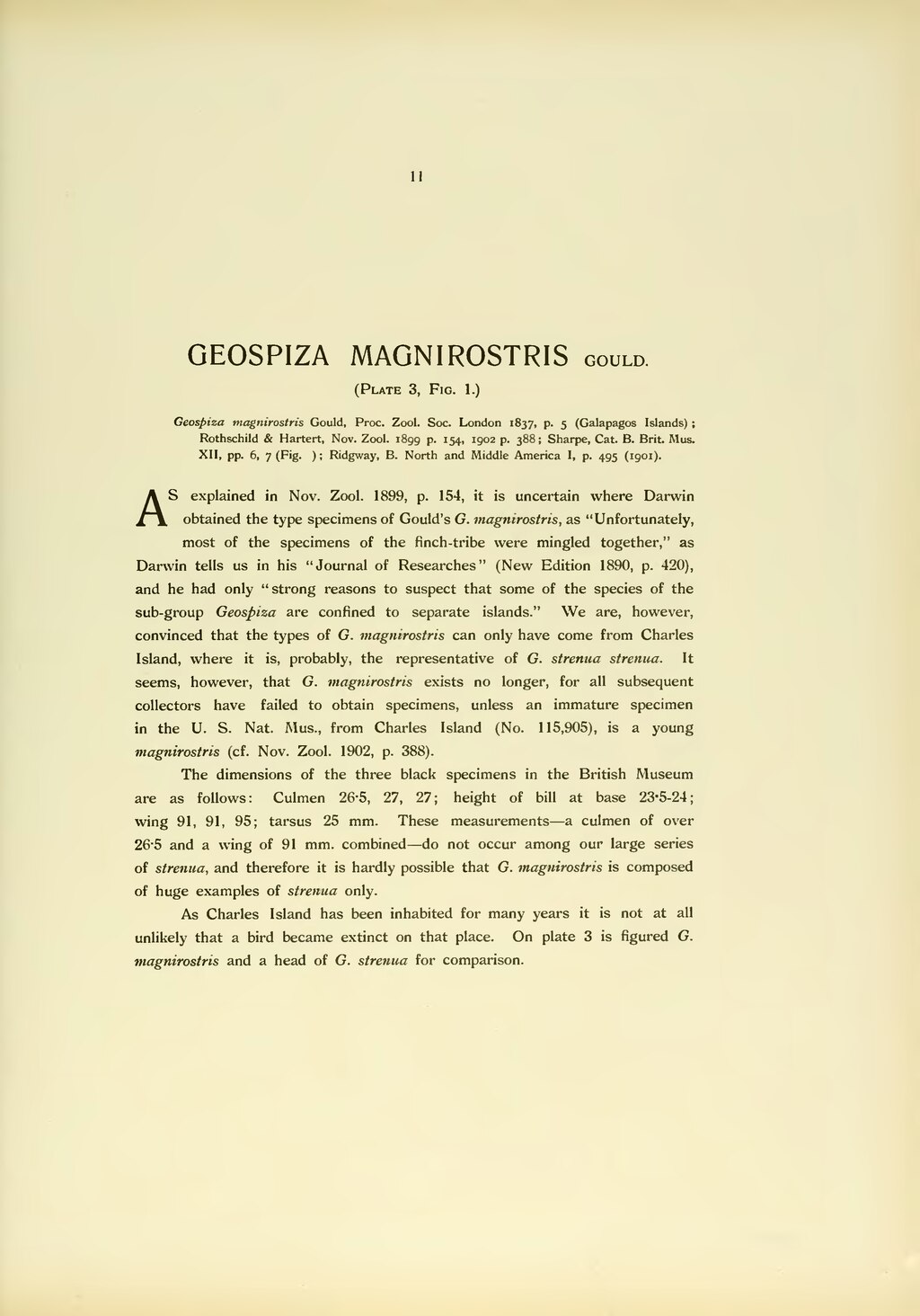11
GEOSPIZA MAGNIROSTRISGOULD.
(Plate 3, Fig. 1.)
- Geospiza magnirostris Gould, Proc. Zool. Soc. London 1837, p. 5 (Galapagos Islands); Rothschild & Hartert, Nov. Zool. 1899 p. 154, 1902 p. 388; Sharpe, Cat. B. Brit. Mus. XII, pp. 6, 7 (Fig.); Ridgway, B. North and Middle America I, p. 495 (1901).
As explained in Nov. Zool. 1899, p. 154, it is uncertain where Darwin obtained the type specimens of Gould's G. magnirostris, as "Unfortunately, most of the specimens of the finch-tribe were mingled together," as Darwin tells us in his "Journal of Researches" (New Edition 1890, p. 420), and he had only "strong reasons to suspect that some of the species of the sub-group Geospiza are confined to separate islands." We are, however, convinced that the types of G. magnirostris can only have come from Charles Island, where it is, probably, the representative of G. strenua strenua. It seems, however, that G. magnirostris exists no longer, for all subsequent collectors have failed to obtain specimens, unless an immature specimen in the U. S. Nat. Mus., from Charles Island (No. 115,905), is a young magnirostris (cf. Nov. Zool. 1902, p. 388).
The dimensions of the three black specimens in the British Museum are as follows: Culmen 26.5, 27, 27; height of bill at base 23.5-24; wing 91, 91, 95; tarsus 25 mm. These measurements—a culmen of over 26.5 and a wing of 91 mm. combined—do not occur among our large series of strenua, and therefore it is hardly possible that G. magnirostris is composed of huge examples of strenua only.
As Charles Island has been inhabited for many years it is not at all unlikely that a bird became extinct on that place. On plate 3 is figured G. magnirostris and a head of G. strenua for comparison.
